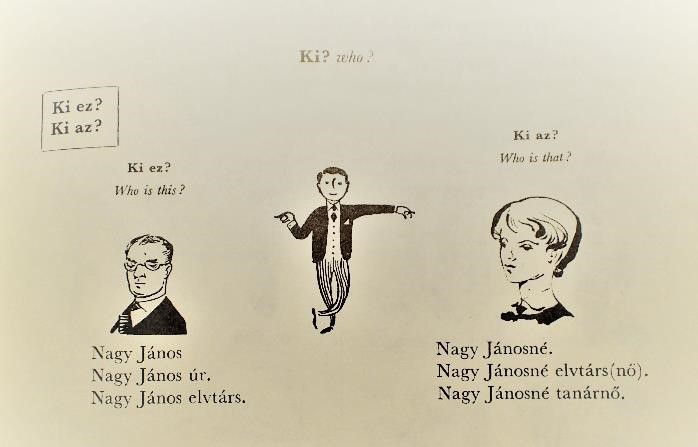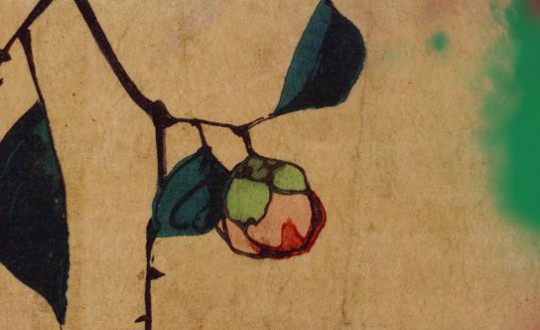Ottilie Mulzet translates from Hungarian and Mongolian. Her translation of László Krasznahorkai’s Seiobo There Below won the Best Translated Book Award in 2014. Her recent translations include Destruction and Sorrow beneath the Heavens by László Krasznahorkai (Seagull Books, 2016); The Dispossessed (HarperCollins, 2016); and Berlin-Hamlet by Szilárd Borbély (NYRB Poets, 2016); forthcoming is her version of Lazarus by Gábor Schein (Seagull Books, 2017), as well as Krasznahorkai’s The Homecoming of Baron Wenckheim (New Directions). She is also working on an anthology of Mongolian Buddhist legends. In 2016 she served as one of the judges of Asymptote’s Close Approximations translation competition and is on the jury for the 2017 ALTA National Translation Award in Prose.
Asymptote’s Editor-at-Large for Slovakia, Julia Sherwood, spoke with Mulzet via email. Below is the first part of their enlightening correspondence. Stay tuned for part 2!
Julia Sherwood (JS): You translate from the Hungarian, are doing a PhD in Mongolian and are based in Prague. Your recent Asymptote review of Richard Weiner’s Game for Real shows that you also have an impressive command of Czech, enabling a close reading of the original and an in-depth review of the translation. How did your involvement with Hungarian begin and what is it like to live between all these languages?
Ottilie Mulzet (OM): Part of the difference is due to my involvement with each of these languages. I started studying Hungarian because of my family background (two of my grandparents emigrated from Hungary), although I didn’t speak it as a child. I decided to learn it in adulthood as the result of some kind of fatal attraction, I guess, and never even realized I would end up translating. Hungarian grammar struck me as being so strange that I couldn’t wait to get onto the next lesson to see if what followed could possibly be any stranger than what I just learnt. I used a hopelessly out-of-date textbook with pen-and-ink illustrations of women in 1950s coiffures having a cigarette in front of a prefabricated housing estate. They spent their evenings complimenting each other on their clothes, sipping tea and playing match games, all the while making sure they were back at their parents’ houses by 8 pm. In retrospect, this textbook actually encoded, along with Hungarian grammar, a manual to the kind of “petty bourgeois-dom” that was so characteristic of central European socialism in the 1980s.

An illustration from my first Hungarian textbook. Here we are introduced to Mr. Comrade Nagy, and his lovely wife, Mrs. Comrade Nagy.
I learned Czech more for practical reasons, because of living in Prague, but there are many aspects of the language I’ve come to love, not least its humour and slang. I try to keep up with what’s going on in Czech literature, although I don’t translate from it. One of the most amazing things about learning Czech is that it has enabled me to study Mongolian—at Charles University, an institution with extraordinary language pedagogy with roots in the pre-war Prague Linguistic Circle, and an astonishing array of languages on offer—from Manchurian and Jagnobi (a descendant of Sogdian) to Jakut and Bengali. One can only hope, given the current trend toward mindless rationalisation, i.e. shutting down whatever seems too impractical or exotic, that the university will stay that way. It’s impossible to understand anything really essential about another culture without knowing something about the language: and the more you know about the language, the better off you are.
But I think it’s important to remember that—as no doubt you know so well, too—historically, people in Central Europe grew up speaking two or three or even more languages. This was always a multi-lingual milieu, and of course Prague itself was a bilingual city before the war. Of course, every time I speak another language I feel I am entering a different world and I always feel cognizant of a certain responsibility to that linguistic world. At the same time, each one offers different possibilities, even on a phenomenological level.
JS: Among the authors you have translated are two of the most acclaimed and challenging Hungarian writers, László Krasznahorkai and Szilárd Borbély. In previous interviews you talked about Krasznahorkai’s famously long sentences and also mentioned that you had to do quite a bit of research for your prize-winning translation of his Seiobo There Below. You are currently working on his new book, The Homecoming of Baron Wenckheim. Has that posed any new, unexpected challenges?
OM: I’m actually still at the beginning stages of The Homecoming of Baron Wenckheim, so it’s probably a bit too early to go into the specific challenges right now. But I can say that this book—unlike Seiobo There Below—takes place in the Hungary of today. Krasznahorkai considers it to be his magnum opus, the culmination of all of his previous work (an assessment with which I would agree), and there are certain general characteristics that pick up from both Satantango and the Melancholy of Resistance. The Homecoming of Baron Wenckheim takes up the narrative of a Hungarian nobleman (the Wenckheims of the title are a real, central-European, aristocratic family) who has been living in exile for decades, and finally decides to return to Hungary. There, he is welcomed as something of a Messiah who—it is believed—will magically rescue the citizens of a provincial town from their torpid and mediocre lives. His former teenage sweetheart, now a lady ‘of a certain age,’ is there, too. And there’s another character, known only as the Professor, an angry self-exile from the town—those sections are pure translator-candy … But I probably shouldn’t go into too much more detail right now. I would just say that I personally can’t think of any other book that describes Hungary as it is today—and in some respects, the whole western world—more so than this one.

Ottilie Mulzet
JS: Some of László Krasznahorkai’s novels, turned into cult films by Béla Tarr, are set in the bleak Hungarian countryside. However, this bleakness—if I can put it that way—pales in comparison with the grim depiction of extreme poverty and exclusion in the novel The Dispossessed by Szilárd Borbély, which you have also recently translated. What was it like working on this book, particularly capturing the deceptively simple yet complex voice of its young narrator? Did you get a chance to discuss your choices with the author before his untimely death?
OM: The comparison between Borbély and Krasznahorkai is really fascinating, and of course in some ways their work is a depiction of the same world. But—to take Satantango as an example—you’re seeing a collective farm in the late 80s, it’s the last dying gasps of Kádárism (János Kádár was Hungary’s communist party leader from the failed revolution of 1956 until 1989), whereas in The Dispossessed, the village is, if possible, even more marginalized than the one in Satantango, and it’s still the mid-60s, still the world of ‘deep Stalinism’, if you will. This topic deserves further and deeper discussion, but my own sense is that both authors possibly have a somewhat different relationship to the poverty they are writing about, personally and aesthetically speaking, and in certain ways they need this milieu to do different things for them in the books that they’re writing.
Krasznahorkai has spoken in interviews about how he ‘went down’ into the world of the Hungarian underclass, how he submerged himself in it for quite a few years, I believe. In Borbély’s case, the literally ‘dispossessed’ world of the rural poor—the landless agro-proletariat of the huge collective farms, their own history and traditions only preserved in small fragments—was the entire world that he was born into. In a sense, this dispossession was his destiny. Indeed, that narrow historical window in Hungarian society of the 1970s and 1980s might have been one of the very rare periods when someone born into that milieu would really have a chance to climb out of those desperate circumstances. At other times, talent, or even brilliance, wouldn’t necessarily prove enough. Borbély spoke of this in interviews: he didn’t think kids today from really poor environments in Hungary have the same chances he did. I think this was immensely distressing for him.
I’d been translating Borbély for a long time already—since 2003, when I began the book, and so I felt very used to his voice. We were also very good friends when he was still alive. He had a really unique way of expressing himself, always very brief, but he always cut straight to the essence. His work usually dealt with incredibly difficult topics, and yet he himself was quite a humourous person, often very whimsical, and extraordinarily kind as well. He could express a complex reality in few words as no one else could. I really felt like I heard his voice narrating the story, speaking the words, as I was translating The Dispossessed.
I was able to discuss some things in the novel with him before his death but, sadly, not all. To give one example, probably one of the most perplexing passages was one where the boy narrator describes visiting some more well-off relatives who have a TV set in their house: there’s something the family wants to watch and the family doesn’t like to go to the village House of Culture, because there everyone is always talking over the program and you can’t hear what’s being said. Borbély mentions a lace doily on the TV set, which even today could be typical enough, but then he describes this piece of lilac paper affixed to the TV set with a bandage so that it’s covering the screen. I consulted with some other translators of the book and we couldn’t figure this out. The question even arose of this possibly being some kind of a mistake, but everything else in the book is described with such anthropological precision (e.g., how to cut a chicken’s neck for kosher slaughter, etc.) so I didn’t feel this detail was included extraneously or erroneously. Finally, a wonderful friend, the head of the Hungarian Department of Charles University, Dr. Jenő Gál, kindly cleared it up for me: in the early days of black-and-white TV sets, people would sometimes put coloured plastic in front of the screen in order to get a coloured picture (of sorts). I came to the conclusion that the relatives in this passage used this lilac paper for the same purposes.
Then, not long after, I was walking along a street near my house where, clearly, it seemed someone’s flat was being cleared out (a few days before that a very sad funeral notice had appeared taped up on the storefront of the local tobacconist’s—someone living in the neighbourhood had passed away and there was going to be no ceremony at all, just a cremation). I realized this must be the residence of the poor soul who had passed away. And of course, this being Prague (never let anything go to waste!), a few people were already casting their eyes over the possessions piled up in the street—and it really wasn’t much, just bits of furniture, but lots of books and papers—to see what might be of use. Well, I too edged closer to the pile to have a look, and lying at the very top of one of this stacks was an A4 notebook—it looked like someone’s old schoolbook, or copybook—covered in exactly this kind of lilac paper, neatly labelled with the subject. And the paper is kind of transparent.
Part 2 of Julia and Ottilie’s conversation still to come!
Julia Sherwood was born and grew up in Bratislava, which was then part of Czechoslovakia. After working for Amnesty International for over 20 years, she became a freelance translator in 2008. Based in London, she is editor-at-large with Asymptote, the international journal of translation. Jointly with Peter Sherwood, she has translated into English books by Daniela Kapitáňová, Jana Juráňová, Peter Krištúfek and, most recently, Uršuľa Kovalyk’s The Equestrienne from the Slovak; and a novel by Petra Procházková from the Czech and Lullaby for a Hanged Man, a novella by Hubert Klimko-Dobrzaniecki from the Polish. She has also translated the latter into Slovak, as well as Tony Judt’s The Memory Chalet.
*****
Read More Interviews with Translators:

